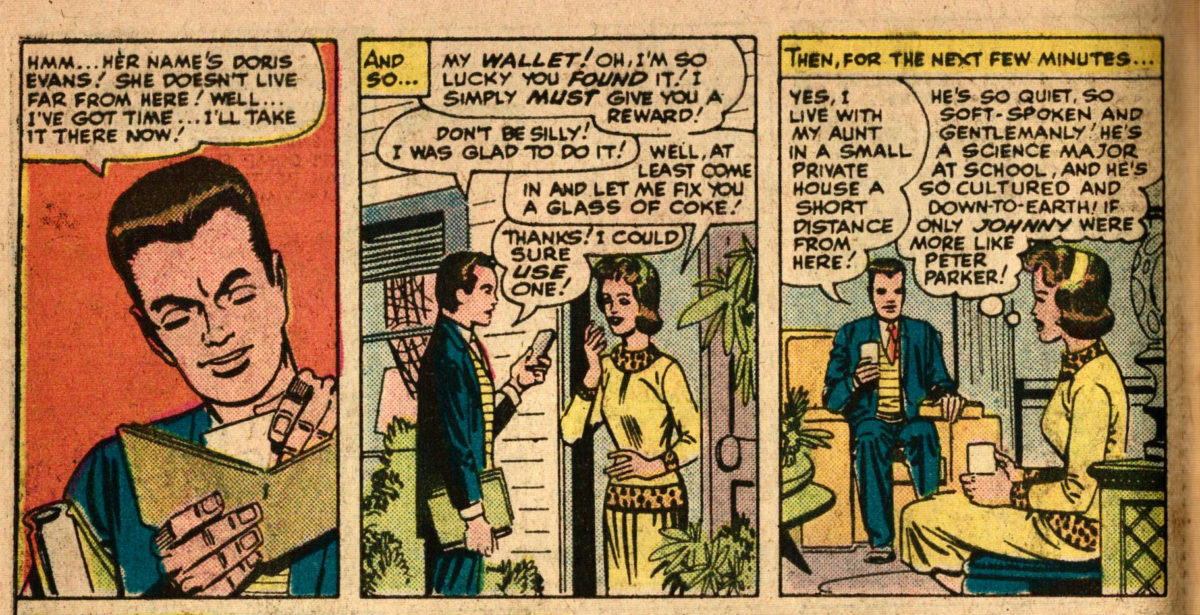Featuring: Daredevil
Release: February 4, 1964
Cover: April 1964
12 cents
Written by: Stan Lee
Illustrated by: Bill Everett
Lettered by: Sam Rosen
23 pages
Spider-Man and the Fantastic Four do not actually appear in this issue. They mention Spider-Man on the cover and the first page in an attempt to market Daredevil as their next Spider-Man.
Daredevil has a pretty distinctive logo, an expanding font with a swoosh running through it. Preceded by a “Here comes…”. And then the tagline which will endure to this day: “The Man Without Fear”.

Bill Everett is a name we should be plenty familiar with by now even though this is his first time showing up in the Marvel Age. We know him from our “Prelude” reading as the creator of Namor the Sub-Mariner 25 years earlier. Reportedly, he was very slow working on this issue of Daredevil, leading to this issue being released a full 7 months after it was originally scheduled. So he won’t be invited back to illustrate more Daredevil stories. He’ll be put on covers and finishes, jobs where he’s less likely to blow deadlines. A shame, because he does great work here.
Continue reading “Daredevil #1”




























